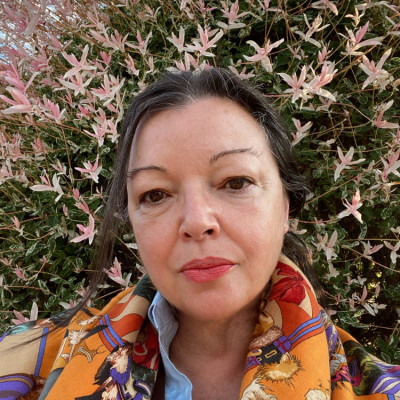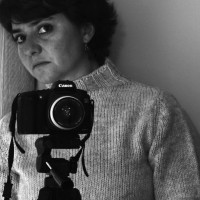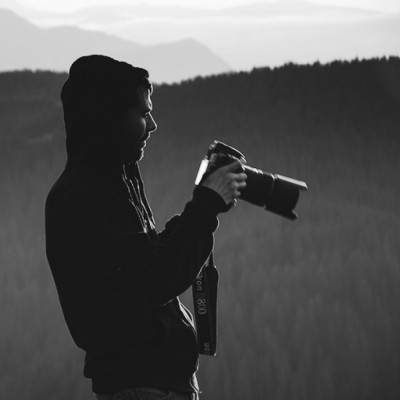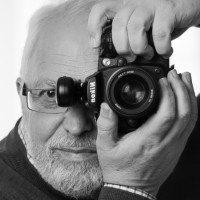SEARCH






|
|
|
|


Tutorial by Sylvain Rouvier
Edited and published by Yvette Depaepe, the 16th of February 2023
A surreal image emerges by combining edited images of the photographer's hands, a surfer and a beach studded with remnants of World War II structures.
Nikon D90 . Nikkor 14-24mm f/2.8 . + Nikkor 105mm f/.8 . f/various
Initially, I didn't have the idea for this particular image in mind while I was shooting the different source images. Generally, my ideas for composites (and their titles) come after I've taken various unrelated shots. This idea arose later while I was working on gestures in photographs that I had taken of my own hands during a long, rainy evening.
"This beach is full of remnants of concrete structures from World War II, so I also took a few pictures of them."
Before then, I visited the island of Oléron, off the coast of France, to take pictures of a friend of mine who surfs. We went to the beach early in the morning to catch the "golden hour" light. This beach is full of remnants of concrete structures from World War II, so I also took a few pictures of them. Usually I take a lot of pictures to ensure a good result; I aim to create a solid composition in each, with an appealing connection between foreground and background. I also try to capture the scene under good available light, and I explore various depths of field for each scene.
This final composition follows the rule of thirds (foreground, the hands/birds and the sky). In creating the composite image, it was important to consider the direction of the light and the shadows cast by objects in all of the source images that contributed to the final version. The shadows should match throughout the finished image to suggest the entire scene existed under a common light source.
For the images of my hands, I used a 105mm f/2.8 macro lens with a remote Nikon Speedlight SB-600 triggered by the built-in flash of the camera. I placed a small additional light near my hands. The Speedlight created the shadows of my fingers, which are seen on the beach. I added some white color to my hands to accentuate the skin texture. I shot about 100 pictures with different gestures and light, and kept the best ones; three of them were selected for this scene. Again, it was important that the light and shadows of the added images match with the light throughout the main scene.
"I've followed that advice here, creating this surreal scene in which I want to make people think about how different our life is today compared to, for example, the horrible period of World War II."
In composites like this, I always try to have something interesting in the foreground, but also in the middle and the background. A painter friend of mine told me that if we want to tell a story in our images, it's better to do it with a flow that follows our reading direction: for instance, the past is reflected in the left side of the image, and the present is reflected in the right side. I've followed that advice here, creating this surreal scene in which I want to make people think about how different our life is today compared to, for example, the horrible period of World War II. Here in the present, we live in a free country and can simply enjoy this beach. The surfer represents the concept of freedom; someone who loves nature and is free to enjoy it.
I was told later by several people that the image reminded them of works by Salvador Dali. I'm not sure if I was inspired by him, but perhaps the mood, the light and the colors of the beach are all reminiscent of some of his paintings, along with the surreal feel. Having seen some of his work once again, I do not think my work can be compared with that of Dali, though it's very flattering if some people think so.
POST PROCESSING
I use a Wacom Intuos A5 tablet with Adobe Photoshop and Lightroom for post-processing.
The image is composed of 10 different source pictures: one photo of the distant surfer, two photos of the various concrete structures, one photo of the beach used in creating the foreground, three pictures of my own hands and three photos of crows.
1) After making basic adjustments to the RAW files in Lightroom, I exported all 10 images to Photoshop. One of the images of the concrete structures was used as the basis onto which everything else was added. In the sky, I desaturated the blue color tones and added some green coloring to make it look more dramatic. Often when I edit a picture, I add some green, blue or purple to the shadow colors, and some yellow to the lighter color tones, using a Color Balance adjustment layer. It all depends on the final atmosphere I'm trying to create.
2) For the surfer, the source image didn't have enough beach area included below his body, so I added more sand from another beach picture to extend the foreground. To blend the parts together I used a very big Brush, painting on a layer mask. I also made several overall color adjustments (using many layers). I only used Soft Light blending mode for the layers because most of the other blending modes can destroy too much detail.
3) I made adjustments to each of the three hand images. It was the most time-consuming part of the work. I then added them into the scene.
4) Next, the edited images of the crows were added. The one in flight near the foreground hand adds a bit of movement to the image. Two other crows rest on the middle hand.
5) I created a thin thread coming down from above, tied around a finger of the foreground “dead hand” to represent the the idea of remembering, as if to say, "Don't forget them."
6) Finally, I applied Curves, Color Balance and Saturation adjustment layers to the overall scene.
TIPS
1) Follow the rule of thirds and other general rules for creating strong compositions.
2) When you're shooting, pay close attention to the direction of light and the shadows it creates so that the final scene is believable.
3) Keep something interesting in the foreground, the middle and the background. Oftentimes the background is neglected, but in my opinion, it is really important for the final composition.
BIOGRAPHY
I'm from Lyon, France. I'm a graphic designer by profession, and I really enjoy creating these kinds of images. I started with photography in order to build my own archives from which I could create new scenes and other stuff useful in graphic design. I really like it because it offers so many creative possibilities to construct a good piece of artwork.
 | Write |
 | Ludmila Shumilova PRO A very strong and poetic image, Sylvain! Thank you for sharing the details of its making. |
 | Susi PRO Excelente creación!!! Gracias por compartir |
 | Sylvain Rouvier |
 | Eduardo Blanco García PRO Estupendo |
 | Yvette Depaepe CREW Timeless creation very appropriated now that we are involved in another war, Sylvain. Thanks for the interesting information on the making of this great piece of art. Cheers, Yvette |